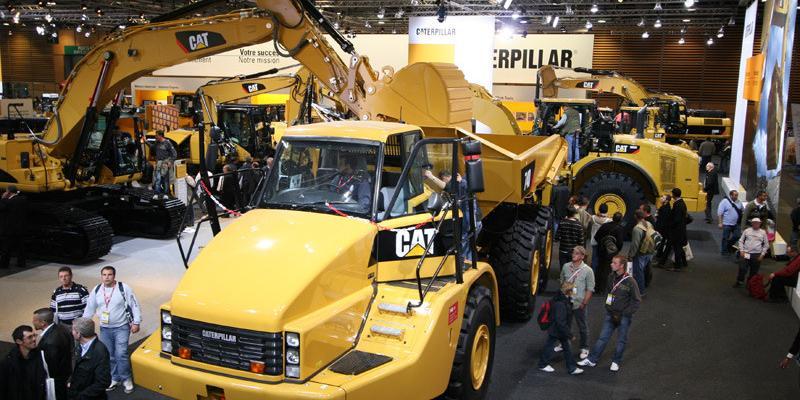1350 exhibitors, an exhibition area the size of 75 football fields and just a couple of hours to get a feel for what goes on in the industry. How do you manage that? Focus, I’d say. So with this year’s show theme ‘energy efficiency and sustainable productivity’ I focused my efforts on what companies are doing to help contractors be productive in a responsible way.

Hybrid construction technology may be driving forward but not many hybrid machines have actually made it ‘into the field’. While big players such as Caterpillar, Hitachi and Hyundai have all embarked on the high road to hybrid equipment, it is the Komatsu HB215LC-1 excavator that catches my eye.
Critics claim the initial cost of a hybrid machine is too high, but Marc Blondeel, Communication Coordinator at Komatsu, is confident that the HB215LC-1 pays back its investment within a reasonable amount of time. “Using swing energy regeneration, it is on average 25% more fuel efficient than traditional excavators. And, contractors with a hybrid excavator have a real advantage when pitching for projects submitted by environmentally conscious municipalities. At the moment, already 1400 HB215LC-1s are in operation worldwide.”
From Komatsu I make my way to the Caterpillar stand. This market leader is introducing no fewer than 64 new machines this year. How’s that for market confidence! No ‘hybrid highlights’ here; the 996K CVT wheel loader took centre stage. Thanks to its Cat Constant Velocity Transmission, the machine delivers high fuel economy and easy operation. Because the CVT doesn’t require a torque converter and there are no gears to shift, owners should experience significant efficiency gains compared to conventional drive trains.
Smart solutions make job sites more productive
While many construction equipment manufacturers are recording moderate growth in Q1 contractors are still reluctant to invest in new equipment. So where does that leave equipment manufacturers; how can they still make a difference? “By offering solutions that help contractors manage their fleet better, so they are more productive,” Marc at Komatsu tells me.
Sitting in a life size model of a Komatsu excavator, I see how the Komtrax satellite tracking system provides loads of information. Is a machine actually productive or just running idle (is the operator having an extended lunch?); how and where is the fuel used (during working hours or at the weekend?); and, is this machine best suited for this job or can it be more profitable at another location?
It appears that engine manufacturers have cottoned on to the same idea. John Deere’s JDLink software program gives users remote access to their fleet location. They can see what their equipment is earning, while keeping preventative maintenance tabs on each machine. Also, by linking it to John Deere’s Service Advisor Remote program a John Deere distributor can monitor the customer’s engine readings and advise when maintenance is required. Technical problems are diagnosed and resolved instantly and remotely – no need for on-site technicians.
My final stop is the Bobcat stand where the E16, a limited edition compact excavator marks the company’s celebration of 25 years in this market. Post-show news indicates that Bobcat closed some considerable sales during Intermat – another reason to celebrate.
Mixed feelings
I’m leaving the show thinking ‘Are we on a road to recovery?’ While some representatives consider the industry to be on the rise, others were less optimistic. If the construction industry is the thermometer of a country’s economy as is often stated, let’s hope the moderate upward trend continues.







